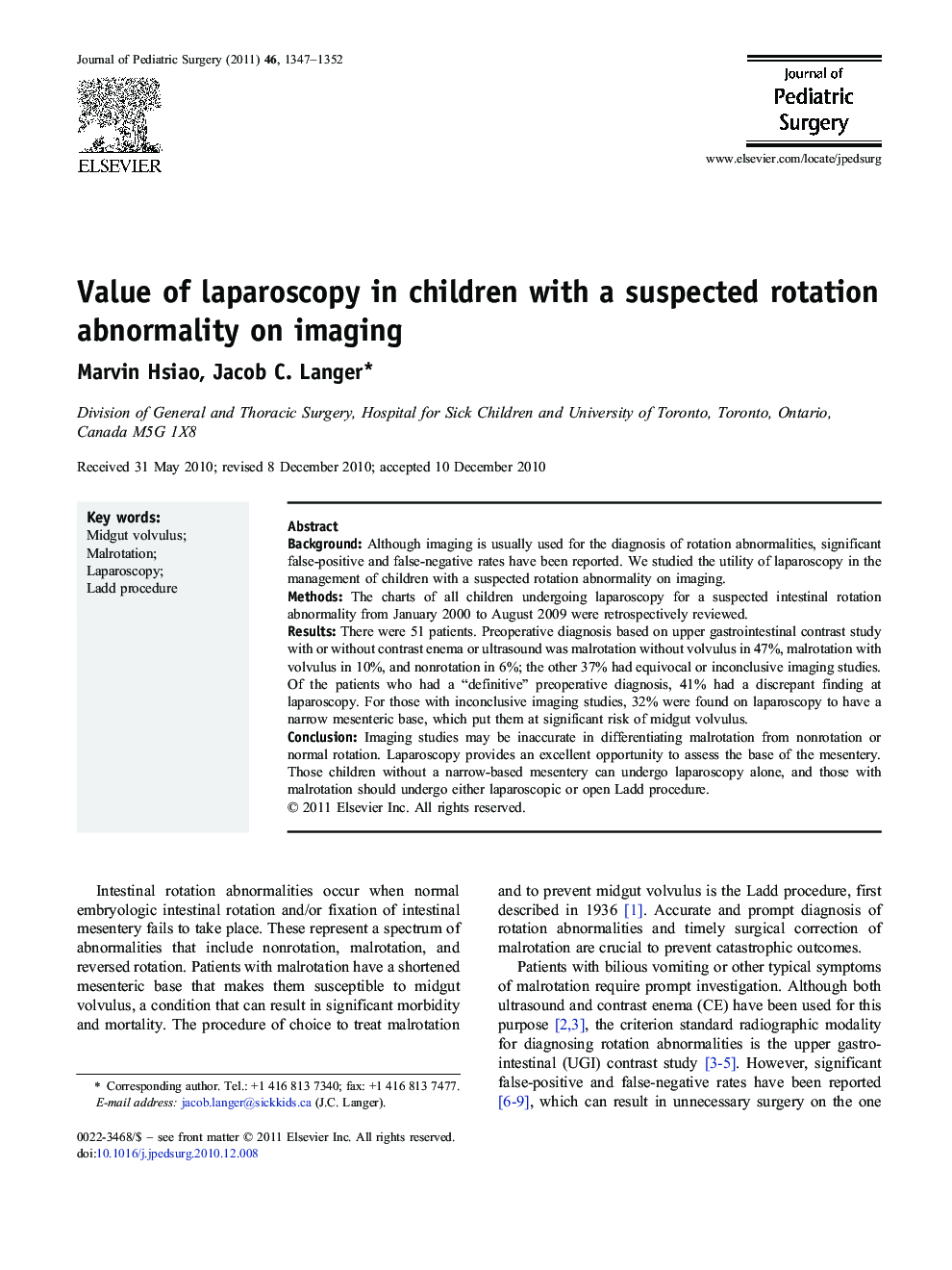| Article ID | Journal | Published Year | Pages | File Type |
|---|---|---|---|---|
| 4156634 | Journal of Pediatric Surgery | 2011 | 6 Pages |
BackgroundAlthough imaging is usually used for the diagnosis of rotation abnormalities, significant false-positive and false-negative rates have been reported. We studied the utility of laparoscopy in the management of children with a suspected rotation abnormality on imaging.MethodsThe charts of all children undergoing laparoscopy for a suspected intestinal rotation abnormality from January 2000 to August 2009 were retrospectively reviewed.ResultsThere were 51 patients. Preoperative diagnosis based on upper gastrointestinal contrast study with or without contrast enema or ultrasound was malrotation without volvulus in 47%, malrotation with volvulus in 10%, and nonrotation in 6%; the other 37% had equivocal or inconclusive imaging studies. Of the patients who had a “definitive” preoperative diagnosis, 41% had a discrepant finding at laparoscopy. For those with inconclusive imaging studies, 32% were found on laparoscopy to have a narrow mesenteric base, which put them at significant risk of midgut volvulus.ConclusionImaging studies may be inaccurate in differentiating malrotation from nonrotation or normal rotation. Laparoscopy provides an excellent opportunity to assess the base of the mesentery. Those children without a narrow-based mesentery can undergo laparoscopy alone, and those with malrotation should undergo either laparoscopic or open Ladd procedure.
